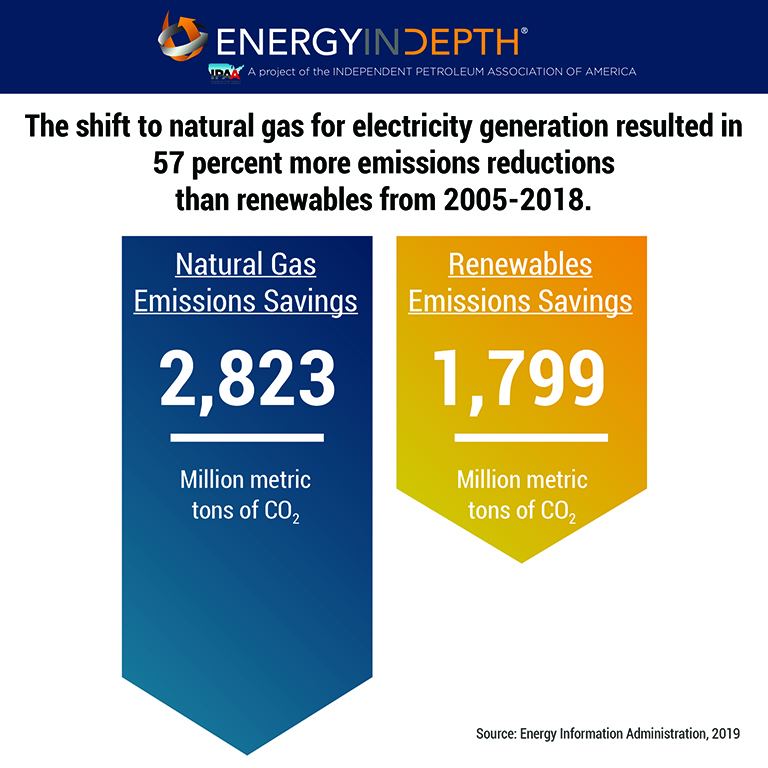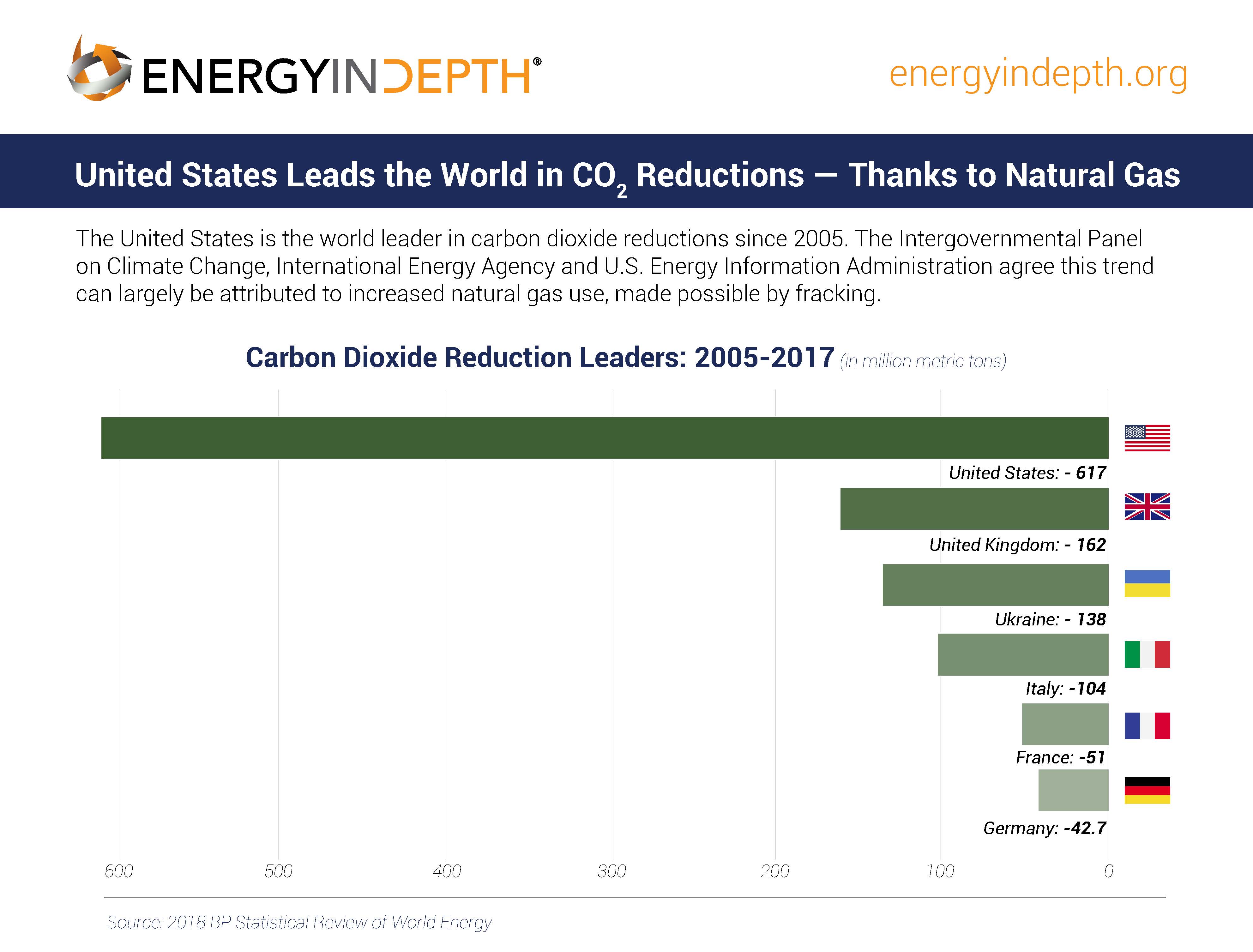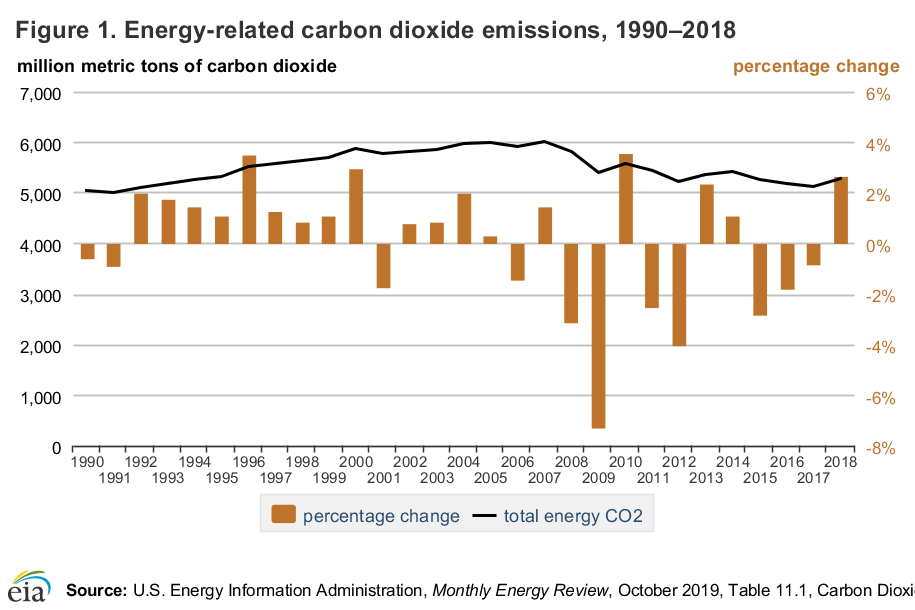The world’s leading producer of natural gas continues to utilize this abundant resource as the favored choice for new electricity generation, aiding in the fight against climate change. The shift in the United States to building more natural gas power plants has led to the reduction of more than 2.8 billion metric tons of carbon dioxide emissions since 2005, making it the largest source of energy-related carbon savings, recent data from the Energy Information Administration show.

Changing of the Guard
Many expected renewables would overtake natural gas as the largest source of emissions savings in 2018, as non-carbon electricity generation has risen by 35 percent since 2005. But EIA’s new data show natural gas has widened the gap with renewables since 2017 in the reduction of carbon emissions in electricity generation, underscoring its ability to provide consumers reliable low-cost, clean energy, and its vital role in sustainability.
From EIA:
“Between 2005 and 2018, EIA has calculated that cumulative U.S. CO2 emissions reductions attributable specifically to shifts from coal to natural gas and to non-carbon generation totaled 4,621 MMmt. Of this total, 2,823 MMmt resulted from decreased use of coal and increased use of natural gas. 1,799 MMmt resulted from decreased use of coal and increased use of non-carbon generation sources. Figure 9 shows how the emissions reductions as a result of these factors occurred in each year during the period.” (emphasis added)

Across the country, especially in the south central region and in the Appalachian Basin, more natural gas power plants are being built or replacing retired plants. As they come online, the benefits in carbon emission reduction are quick to take effect and easily measured. According to EIA:
“Changing fuel mix has reduced the carbon intensity of U.S. electricity generation. A major factor in recent reductions in the carbon intensity of electric generation in the United States is the reduced generation of electricity using coal at the same time that generation has increased using natural gas, which emits less CO2 for the same amount of electricity generated.”
Exporting the Benefits
Because of the transition to natural gas as an energy source, the United States leads the world in carbon dioxide reductions, and is now exporting these benefits around the world.

The United States has become a global energy leader. U.S. oil exports exceeded imports for the first time ever this month. It became a net exporter of natural gas in 2017, and according to the International Energy Agency, by 2024, the United States will become the world’s top LNG exporter, with shipments projected to outpace Australia’s and Qatar’s in the next five years.
As IEA Executive Director Fatih Birol explained:
“The second wave of the U.S. shale revolution is coming. It will see the United States account for 70 percent of the rise in global oil production and some 75 percent of the expansion in LNG trade over the next five years. This will shake up international oil and gas trade flows, with profound implications for the geopolitics of energy.”
The United States will continue to dominate the global market place, able to provide our allies abroad the same benefits, which have a global impact in reducing emissions. According to a new, far-reaching study from IEA, a global transition to natural gas for electricity generation could prevent 1.2 billion tons of carbon emissions from entering the atmosphere.
More to Come
While overall CO2 emissions rose from 2017 levels, this was previously forecasted by EIA, along with a projection CO2 levels will fall in 2019, a projection echoed by other experts.
According to the most recent report:
U.S. carbon dioxide (CO2) emissions from the consumption of fossil fuels were 5,269 million metric tons (MMmt) in 2018, an increase of 2.7% (139 MMmt) from the 2017 level. Despite this increase, energy-related CO2 emissions have declined in 6 of the past 10 years. (emphasis added)

Despite the rise in 2018, EIA projects in its Short-Term Energy Outlook another drop in energy-related carbon emissions in 2019. This is in large part due to more natural gas plants coming online, reducing emissions.
“EIA forecasts that, after rising by 2.7% in 2018, U.S. energy-related carbon dioxide (CO2) emissions will decline by 1.7% in 2019 and by 2.0% in 2020, partially as a result of lower forecast energy consumption. In addition, EIA also expects U.S. CO2 emissions in 2019 to decline because the forecast share of electricity generated from natural gas and renewables will increase, and the share generated from coal, which is a more carbon-intensive energy source, will decrease…”
According to that same report, EIA is projecting the share of U.S. total utility-scale electricity generation from natural gas-fired power plants will rise from 34 percent in 2018 to 37 percent in 2019 and to 38 percent in 2020. As the forecasted share of electricity generated from natural gas will increase, carbon emissions will decrease as a result.
Conclusion
Despite the braying from anti-energy activists and some Democrat presidential candidates calling to ban fracking or rescind leasing on federal lands, natural gas will continue to demonstrate its environmental and economic benefits, both here and abroad.
In the meantime, the United States can continue to rely on natural gas to provide clean, affordable energy, while America’s LNG trade network continues to expand. With an increasing demand for clean energy now and in the years ahead, the United States is well positioned with its ample supply.